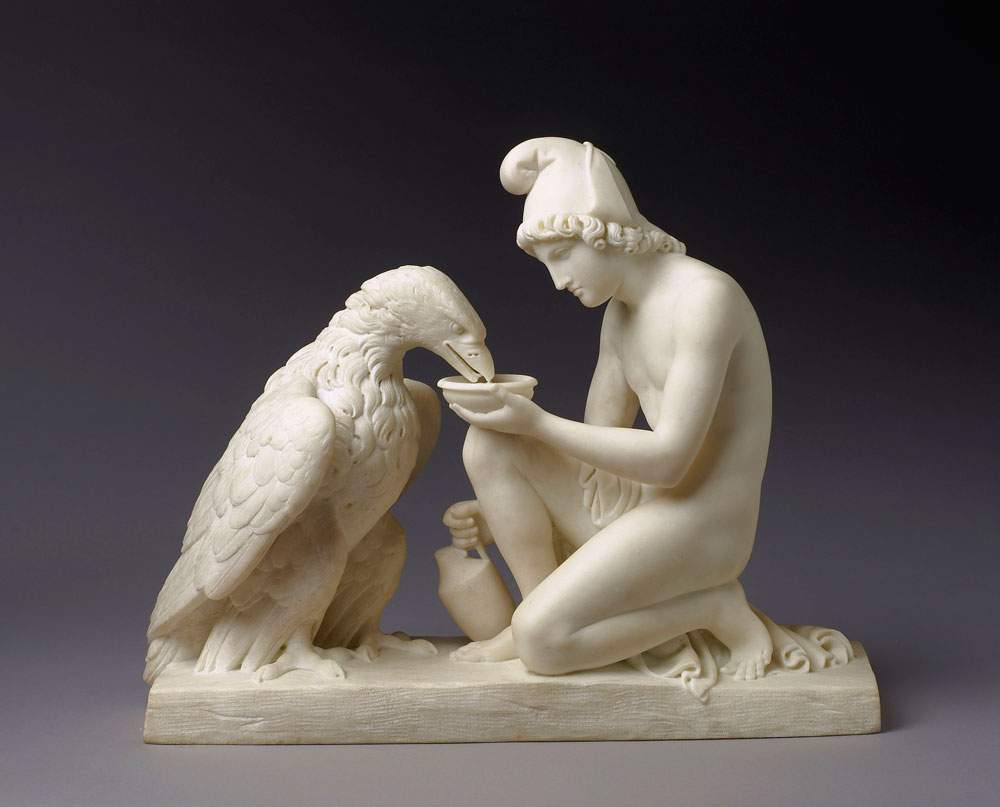The myth of Dante and Napoleon in the 19th century: a major exhibition in Brescia dedicated
In Brescia, at Palazzo Tosio, a splendid house-museum and home of the Athenaeum of Brescia, the exhibition Dante and Napoleon, curated by Roberta D’Adda and Sergio Onger, will be on view from May 5 to December 15, 2021. On the occasion of the seven hundredth anniversary of Dante’s death and the two hundredth anniversary of Napoleon’s death, the exhibition aims to provide an understanding of the fundamental role of Dante and Napoleon in the early nineteenth century and their symbolic value in the construction of national, cultural, linguistic and civil identity in Italy at the height of the Risorgimento.
More than eighty works, including paintings, sculptures, drawings, prints and medals from public and private collections, will be on display, placed in dialogue with the permanent itinerary of the house-museum of Paolo Tosio (1775 - 1842). The latter gathered in his palace an important art collection with masterpieces by Raphael, Lotto and Moretto, Flemish and northern European painting, as well as commissioning neoclassical and Romantic works, as well as some wall decorations, around the myth of Dante and Napoleon. His residence was enriched with a didactic and civic function, as he chose works whose symbolic imagery was to feed his contemporaries.
The works selected for the exhibition testify to the widely spread interest in the two figures of Dante and Napoleon: Alighieri as the reference of the civil and identity aspirations of the nation, of which the poet was considered theunifier from a linguistic point of view; Bonaparte as the one who, thanks to the constitution of the Republic first and then of the Italic Kingdom, had initiated a process of formation of national consciousness that gave birth to the Risorgimento and the unification of the peninsula. In the cultural and political life of 19th-century Italy, Dante and Napoleon played a central role. A role that was covered with ideal values, even to the dimension of myth: intellectuals and patriots assigned to language a decisive function in nation-building and, at the same time, the general course had generated in many Italians an awareness of national identity.
In the 19th century in particular, private collecting contributed greatly to the process of spreading the myth of Dante and Napoleon.
The exhibition will find its place in the neoclassical rooms of the house museum of Palazzo Tosio, evoking the atmosphere of the lively cultural salon that gathered there. More precisely, in the recently rearranged apartment that already houses Democrito Gandolfi’s Bust of Napoleon (a copy by Canova) and Count Ugolino with his sons in the tower of hunger by Giuseppe Diotti, a work from 1832 that at the time of its exhibition in Brera aroused no small scandal because it was judged too crude.
Among the works in the exhibition are Andrea Appiani’s three-quarter portrait of Napoleon in “petit habillement” as king of Italy from 1805; the miniatures, painted on ivory, commissioned by the imperial family from Giambattista Gigola to be given as gifts; and the Fasti di Napoleone designed by Andrea Appiani for the Royal Palace in Milan, illustrated in a prestigious series of 35 etchings. A small romantic masterpiece is Luigi Basiletti’s drawing datable to 1821 and most likely executed after May 5, which depicts a tiny, lonely Napoleon on the rock of St. Helena, overwhelmed by the elements and the force of fate, looking out to the ocean. The painter must have been struck by the melancholy epilogue “of the fatal man,” so much so that he dedicated this drawing to him, despite the fact that six years earlier, in 1815, when informing Count Tosio that Bertel Thorvaldsen’s Ganymede with Jupiter’s Eagle (a work in the exhibition) would soon be delivered to him, he had commented, “You will have already understood how Napoleon has fled from the Island of Elba. There will be[year] other grave misfortunes to our generation!!!”
Dedicated events, guided tours and workshops for families, students and adults, and a dedicated show are planned during the exhibition period.
The exhibition is an initiative of Ateneo di Brescia Academy of Sciences Letters and Arts, City of Brescia, Fondazione Brescia Musei, Alleanza Cultura, in collaboration with the Rete dell’800 Lombardo and under the patronage of the Napoleonic Bicentennial and The Bicentenary of Napoleon’s Death committees.
For information and hours: www.ateneobrescia.it and www.bresciamusei.com. Free admission with reservations required.
Image: Bertel Thorvaldsen, Ganymede with the Eagle of Jupiter (1814-1815; marble; Brescia, Pinacoteca Tosio Martinengo) Ph. credit Fotostudio Rapuzzi
 |
| The myth of Dante and Napoleon in the 19th century: a major exhibition in Brescia dedicated |
Warning: the translation into English of the original Italian article was created using automatic tools. We undertake to review all articles, but we do not guarantee the total absence of inaccuracies in the translation due to the program. You can find the original by clicking on the ITA button. If you find any mistake,please contact us.



























